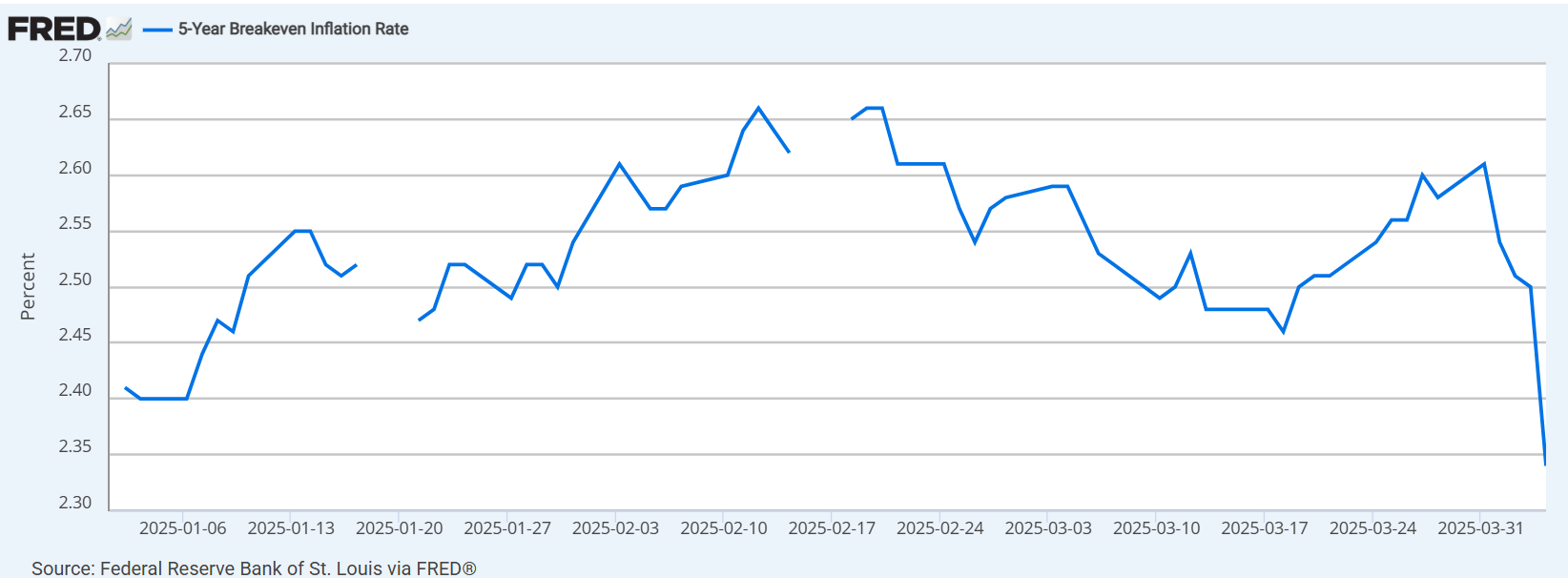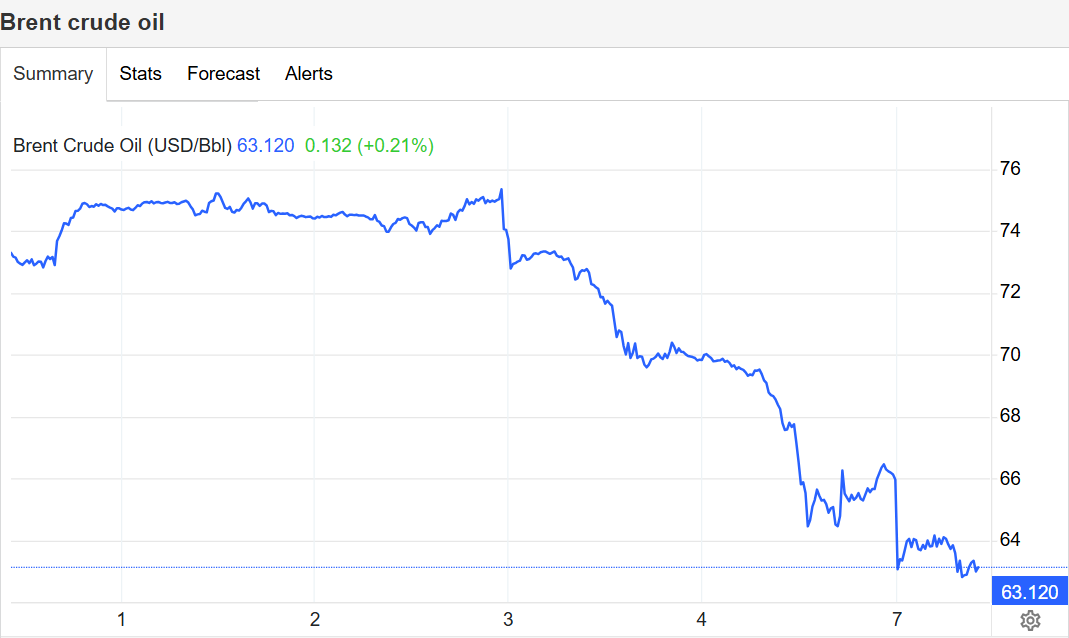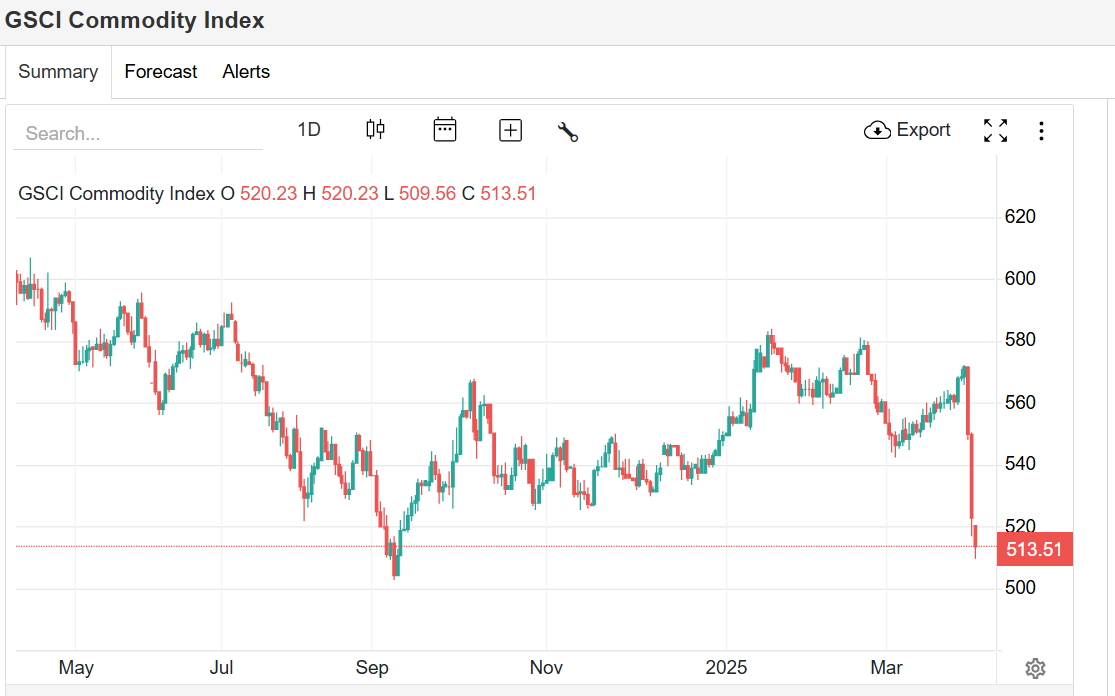Will Trump’s Tariffs Increase Inflation


Breakevens and commodities hint at a complex inflation impact
Tariffs aren’t just in the news; they’re driving it. With all recent developments, many of us wonder: will Trump’s tariffs increase inflation in 2025? The answer may not be straightforward. While some costs are likely to rise, markets hint at a more nuanced — and potentially deflationary — effect
Breakeven Inflation Rate Points to Falling Expectations
To understand how markets are reacting, we can look at the 5-year breakeven inflation rate — a key indicator of future inflation expectations. This rate is calculated by comparing the yields of 5-year U.S. Treasury bonds with those of 5-year Treasury Inflation-Protected Securities (TIPS). The difference between the two reflects the market’s forecast for average inflation over the next five years.
Below is the chart, courtesy of FRED (Federal Reserve Economic Data):
As our readers can see for themselves, the expectation for 5-year inflation dropped by 0.25% from the end of March, when it was at 2.6% per year, to 2.35% per year for the first week of April.
Commodity Prices Offer a Clue
What is causing this big drop? One should look no further than the price for commodities and, in this particular case, crude oil:
Pictured above price of Brent crude oil, courtesy of tradingeconomics.com, over the course of last week (down 15%). It seems like tariffs will result in lower energy prices. Would have you guessed that correctly?
Brent Crude and GSCI Show Broader Deflationary Trends
The performance of Brent crude oil is not an exception. Please see below the Goldman Sachs Commodity Index (GSCI), courtesy of tradingeconomics.com:
That index is down more than 10% since the end of March 2025 and to even below the levels when President Trump was elected.
Final Thoughts: Tariffs May Cool Inflation, Not Raise It
While Trump’s tariffs will undoubtedly push up prices for certain goods — like automobiles and electronics — that doesn’t mean they’ll lead to broad-based inflation. In fact, markets are signaling the opposite.
Rising import costs can suppress consumer demand, effectively cooling inflationary pressures across the economy. Add to that a stagnant Fed balance sheet and the likelihood of a softer labor market, and you have the conditions for potential rate cuts in 2025 — not hikes.
It may seem counterintuitive, but the data suggests that tariffs could ultimately exert a deflationary force rather than an inflationary one.
Get the trading edge you need in today’s markets – sign up for our monthly newsletter featuring in-depth expert analysis, hot market insights, and exclusive trading strategies.



